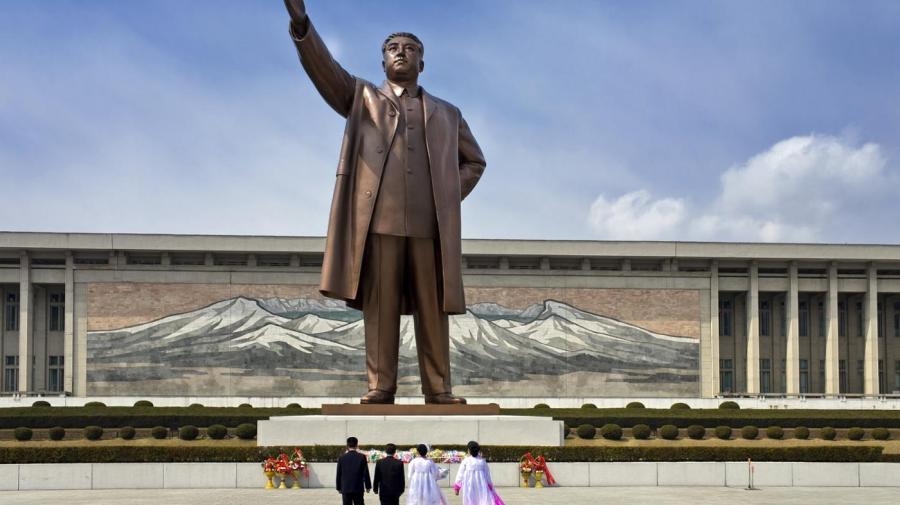What Type of Government Does North Korea Have?

The Democratic People’s Republic of Korea is more commonly known as simply North Korea. This country is a communist state and a dictatorship.
As of 2017, Kim Jong-un is the first chairman of the National Defense Commission in North Korea, assuming these duties after the death of his father, Kim Jong-Il, in 2011 according to the United States Central Intelligence Agency. The National Defense Commission holds the position of the nation’s highest administrative authority.
Divisions of Government
The government of North Korea is also comprised of the State Affairs Commission, which is the highest managing office in the country. A minister of state security and minister of people’s security serve under the direct control of Kim Jong-un. Pak-Yong-sik is the minister of people’s armed forces. Pak Pong-ju is premier and, currently, Kim Yong-nam is the president of the Supreme People’s Assembly Presidium. The Workers’ Party of Korea is the ruling political party in the country. Among its duties, the WPK controls the Korean People’s Army. The Central Court is the highest court in the country, and it is accountable to the Supreme People’s Assembly. The Politburo of the Central People’s Committee is in charge of policymaking in North Korea.
The Korean Society
North Korea split from Japan in 1945 and was founded in 1948. The Kim dynasty began its reign in North Korea in 1948 with the first Democratic People’s Republic of Korea head-of-state Kim II-sung. Deceased leaders of National Defense Commission hold titles of “eternal leaders,” so leaders Kim II-sung and Kim Jong-iI are still listed as holding top positions in the country. The one-party government at the helm of North Korea has changed little since its inception. The rigid class structure embraced by North Korean leadership emphasizes Confucian hierarchical values, as outlined in a document published by the U.S. Library of Congress. Those in leadership positions utilize strong thought control measures over the people, and the society as a whole is deeply militarized. Leaders in high positions in the Korean Workers’ Party and the military receive preferential treatment with luxurious housing, fine food and the best education. The general public lives in poverty with poor healthcare and limited educational opportunities.
Geography and the Judicial System
North Korea is divided into nine separate provinces with the capital city of Pyongyang listed as a direct-administered city and two additional municipalities, Nampo and Rason, designated as “special cities” with a number of second-level cities, urban districts and counties positioned beneath it. On the third level are traditional villages and some cities that are divided into separate wards and neighborhoods. Provincial courts serve intermediate cities while people’s courts serve the lowest level villages and cities. Cases that involve military personnel and crimes involving railroads are tried in special courts.
Korean society is tightly controlled by its government, including media, communication and virtually all aspects of daily life. The Kim Dynasty has been elevated to a status of worship, with the people bowing to their charismatic leader and not daring to whisper any words of dissent for fear of serious repercussions. Generally, North Koreans have been vigorously taught to follow leadership without questioning.





